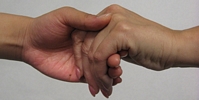|
|
 Acne (1,500) Acne (1,500)
 Addictions (1,500) Addictions (1,500)
 Advice (1,500) Advice (1,500)
 Allergies (1,092) Allergies (1,092)
 Alternative Medicine (1,500) Alternative Medicine (1,500)
 Anti Aging (1,500) Anti Aging (1,500)
 Breakup (1,500) Breakup (1,500)
 Cancer (1,499) Cancer (1,499)
 Dental Care (1,500) Dental Care (1,500)
 Disabilities (1,500) Disabilities (1,500)
 Divorce (1,500) Divorce (1,500)
 Elderly Care (1,498) Elderly Care (1,498)
 Goal Setting (1,500) Goal Setting (1,500)
 Hair Loss (1,500) Hair Loss (1,500)
 Health and Safety (1,497) Health and Safety (1,497)
 Hearing (1,500) Hearing (1,500)
 Law of Attraction (1,499) Law of Attraction (1,499)
 Marriage (1,500) Marriage (1,500)
 Medicine (1,497) Medicine (1,497)
 Meditation (1,499) Meditation (1,499)
 Men's Health (1,500) Men's Health (1,500)
 Mental Health (1,500) Mental Health (1,500)
 Motivational (1,500) Motivational (1,500)
 Nutrition (1,495) Nutrition (1,495)
 Personal Injury (1,499) Personal Injury (1,499)
 Plastic Surgeries (1,500) Plastic Surgeries (1,500)
 Pregnancy (1,496) Pregnancy (1,496)
 Psychology (1,500) Psychology (1,500)
 Public Speaking (1,500) Public Speaking (1,500)
 Quit Smoking (1,500) Quit Smoking (1,500)
 Religion (1,499) Religion (1,499)
 Self Help (1,500) Self Help (1,500)
 Skin Care (1,500) Skin Care (1,500)
 Sleep (1,500) Sleep (1,500)
 Stress Management (1,500) Stress Management (1,500)
 Teenagers (1,492) Teenagers (1,492)
 Time Management (1,500) Time Management (1,500)
 Weddings (1,500) Weddings (1,500)
 Wellness (1,500) Wellness (1,500)
 Women's Health (1,500) Women's Health (1,500)
 Women's Issues (1,500) Women's Issues (1,500)
|
Hodgkin's disease is a cancer of the lymphatic (pronounced lim-FAT-ic) system. The lymphatic system consists of blood vessels, tissues, and other structures that carry lymph (pronounced limf) through the body. Lymph is a bloodlike fluid that carries substances from cells to blood vessels.
Hodgkin’s disease itself can be broken down into several categories. The two main categories are classical Hodgkin’s disease and nodular lymphocyte-predominant Hodgkin's disease. Which type of Hodgkin’s disease a person has is determined by a pathologist who examines the biopsy of the involved node(s). Pathologists look for a particular abnormal cell known as a Reed-Sternberg cell in order to diagnose classic Hodgkin’s disease.
The lymphatic system is part of the body's immune system. It helps the body fight disease and infection. The lymphatic system includes a network of thin lymphatic vessels that branch, like blood vessels, into tissues throughout the body. Lymphatic vessels carry lymph, a colorless, watery fluid that contains infection-fighting cells called lymphocytes. Along this network of vessels are small organs called lymph nodes. Clusters of lymph nodes are found in the underarms, groin, neck, chest, and abdomen. Other parts of the lymphatic system are the spleen, thymus, tonsils, and bone marrow.
Symptoms
A person with Hodgkin's disease usually becomes aware of one or more enlarged lymph nodes, most often in the neck but sometimes in the armpit or groin. Although usually painless, sometimes the enlarged lymph nodes may be painful for a few hours after a person drinks large amounts of alcohol.
Causes
The first sign of this cancer is often an enlarged lymph node which appears without a known cause. The disease can spread to nearby lymph nodes and later may spread to the lungs, liver, or bone marrow.
The cause is not known. Hodgkin's lymphoma is most common among people 15 to 35 and 50 to 70 years old.
Diagnosis: The diagnosis is made by taking a biopsy of an enlarged lymph node or involved organ of the body. Evaluation of bone marrow under microscope may also lead to this diagnosis.
Treatment of Hodgkin's Disease
1.Chemotherapy (using drugs to kill cancer cells and shrink tumors).
2.Bone marrow and peripheral blood transplants - transplants (actually high dose chemotherapy and/or radiotherapy with a "rescue" of the immune system) are being used for certain patients, especially with recurrent disease.
3.Immunotherapy is being studied in Hodgkin's treatment including monoclonal antibody therapy (such as rituxan) and vaccine therapy may not be far off.
More advanced stages of Hodgkin's disease may be treated with mantle field radiation, in which the lymph nodes of the neck, chest, and underarms are irradiated. Inverted Y field radiation is used to irradiate the spleen and the lymph nodes in the upper abdomen and pelvis. Total nodal irradiation includes both mantle field and inverted Y field radiation.
Both chemotherapy and radiotherapy often have side effects. Chemotherapy can result in nausea, vomiting, hair loss, and increased susceptibility to infection. Radiotherapy can cause sore throat, difficulty swallowing, diarrhea, and growth abnormalities in children. Both forms of treatment, especially in combination, can result in sterility (the permanent inability to produce offspring), as well as heart and lung damage.
|
|
|



